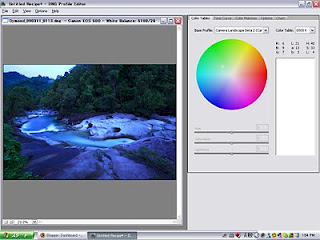 So it's coming up to 7 hours out in the freezing cold taking photos. I've walked a lot of miles through the city of Sapporo and come away with some nice shots. A good overall coverage.
So it's coming up to 7 hours out in the freezing cold taking photos. I've walked a lot of miles through the city of Sapporo and come away with some nice shots. A good overall coverage.One last photo I need before I go is the entrance sign to the Susukino ice statues area. In and of itself it's nothing to write home about. A neon sign in the middle of the road. But as a part of the coverage of an area it's quite vital because it tells the readers where you are.
For some reason my stock agency always takes every image I have ever taken of a sign! I don't know why this is because they never seem to sell too well but they always take them. Maybe they're planning a book on signs some time. I don't know but I always shoot them because they set the location in an easy-to-read way.
 And the final shot before I put the camera back in the backpack? One that shows the entertainment area of Susukino.
And the final shot before I put the camera back in the backpack? One that shows the entertainment area of Susukino.I've shot this corner a million times and never get sick of all that neon. I usually shoot it looking downtown (towards where the ice festival was) but this time shot back towards uptown.
The main reason I did this was to show all the taxis lined up along the street, and the way in which they were all shining red under the garish neon signs.
At about this time I was looking frantically at my watch and preparing to run. Trying to make the last train home? Not quite. Trying to make the closing of Kinokuniya bookstore - a giant book paradise with a photography section that is absolutely huge! A night out without the kids in tow and I would have an hour or so to look at photo books at my leisure. Paradise!
So I ran about 20 blocks only to find they closed at 9 and not 10 like I thought. Oh well, maybe next year!
I hope you enjoyed my run through a night of photography in Japan and next week we'll head back to our regular transmission of images from around the world and the stories behind them.
Have a great weekend.






